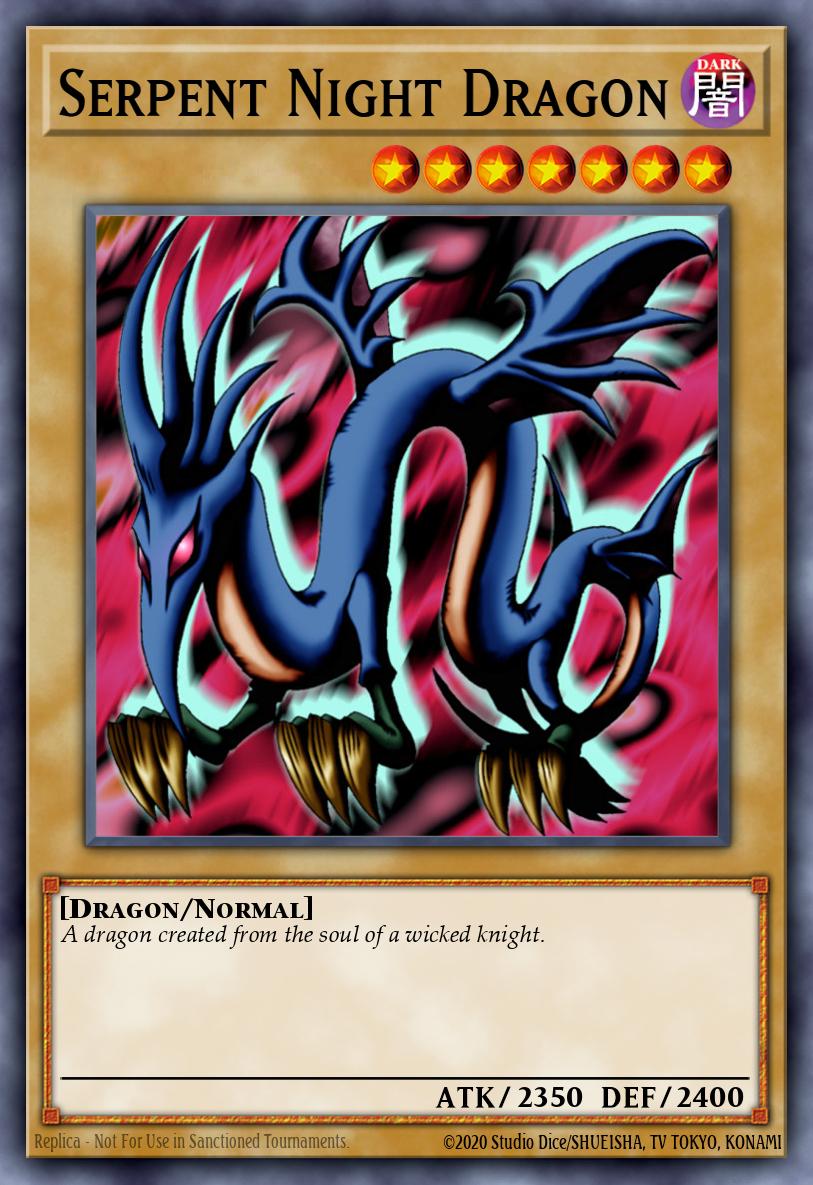Magic Ruler or Spell Ruler?
Spell Ruler is famous for many things - one of which is seen in how it was the first set to use the term "Spell Card". In fact, Spell Ruler featured two distinct printings: "European" and "Worldwide". The "Worldwide" release also includes the "North American" release, which featured a different Language ID. Distinctly, this North American Language ID read "MRL", which stood for "Magic Ruler". As aforementioned, "Magic Ruler" was named such because of how Spell Cards were named "Magic Cards" at this point in time. The term was changed to create a distinction between the other main Trading Card Game of this time - Magic The Gathering. Confusingly, "Spells" are also used as a game term in Magic the Gathering.
The "Worldwide Release" was on December 1, 2004: Almost 2 years later. These packs can be found in the Master Collection 1. This release expanded the amount of cards in the set from 104 to 131 cards. In the Worldwide Release, 26 common cards and 1 rare card were added. The set was later reprinted in October 1, 2010, for the Legendary Collection.
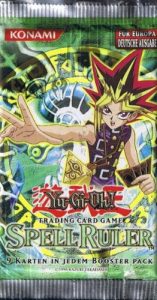
Spell Ruler: Set Breakdown
The Worldwide Release of Spell Ruler featured 131 cards:
- 2 Secret Rare cards.
- 10 Ultra Rare cards.
- 10 Super Rare cards.
- 18 Rare cards (17 in the original release).
- 91 Common cards (65 in the original release).
As mentioned in the previous article on Metal Raiders, old Yugioh sets tended to focus on a theme. Metal Raiders was Effect-Monster-Centric, and Spell Ruler was - you guessed it - Spell-Centric. This set had the very first Ritual Monsters, as seen on the pack's cover card: Relinquished!
Spell Ruler - Commons
Normal Monsters
Only 23 of the 91 common cards in Spell Ruler were Normal Monsters. This may seem like a lot, but's it's a huge reduction from the 51 Normal Monsters featured in Metal Raiders! None of these Normal Monsters saw any significant play, mostly due to their inferior stats. Between the release of Spell Ruler and Metal Raiders was Tournament Pack 1, which included the notorious Mechanicalchaser as an Ultra Rare. None of the Normal Monsters in Spell Ruler could get close to it, nor the almost-as-powerful La Jinn the Mystical Genie of the Lamp and 7 Colored Fish.
Psychic Kappa & Dark Witch
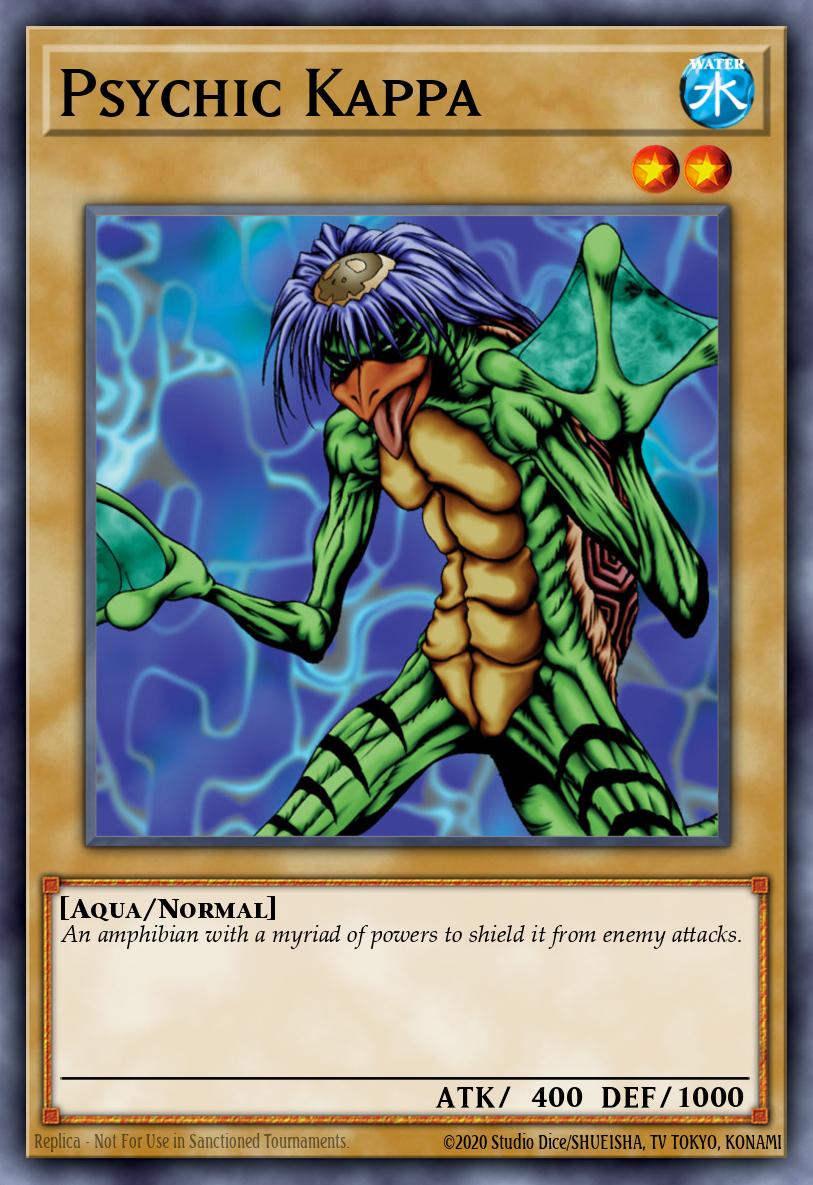
However, some of these would be meta-relevant cards much later down the line: In November 2016, Psychic Kappa (a relative of Armored Kappa) was an option for OCG Rabbit-Toad Turbo. This deck used Rescue Rabbit to summon 2 Slime Toad from the deck, which could then Xyz into the very powerful Toadally Awesome. As Slime Toad (you might know it by the name, "Frog the Jam") was an ancient Mcdonald's Exclusive Promo card, it was very expensive. Some Ebay Sellers listed this card at upwards of $70 a piece! Since the ATK stats were irrelevant when used as XYZ material, the much cheaper Psychic Kappa was often used as a replacement.
You may also remember Dark Witch from its very brief period of TCG relevance. The 2016 metagame featured Extra-Deck Monarchs, with the release of the Emperor of Darkness Structure deck. This deck had a Brilliant Fusion engine, which would send a LIGHT monster and a Gem-Knight Lazuli to the Graveyard, in order to Summon Gem-Knight Seraphinite. Lazuli adds back the LIGHT monster - in this case, Dark Witch, which you can then Tribute Summon. Seraphinite then gives you an extra Normal Summon for a Mega Monarch! Dark Witch was also a Level 5 monster, making rank 5 XYZ plays with Seraphinite possible.
Effect Monsters
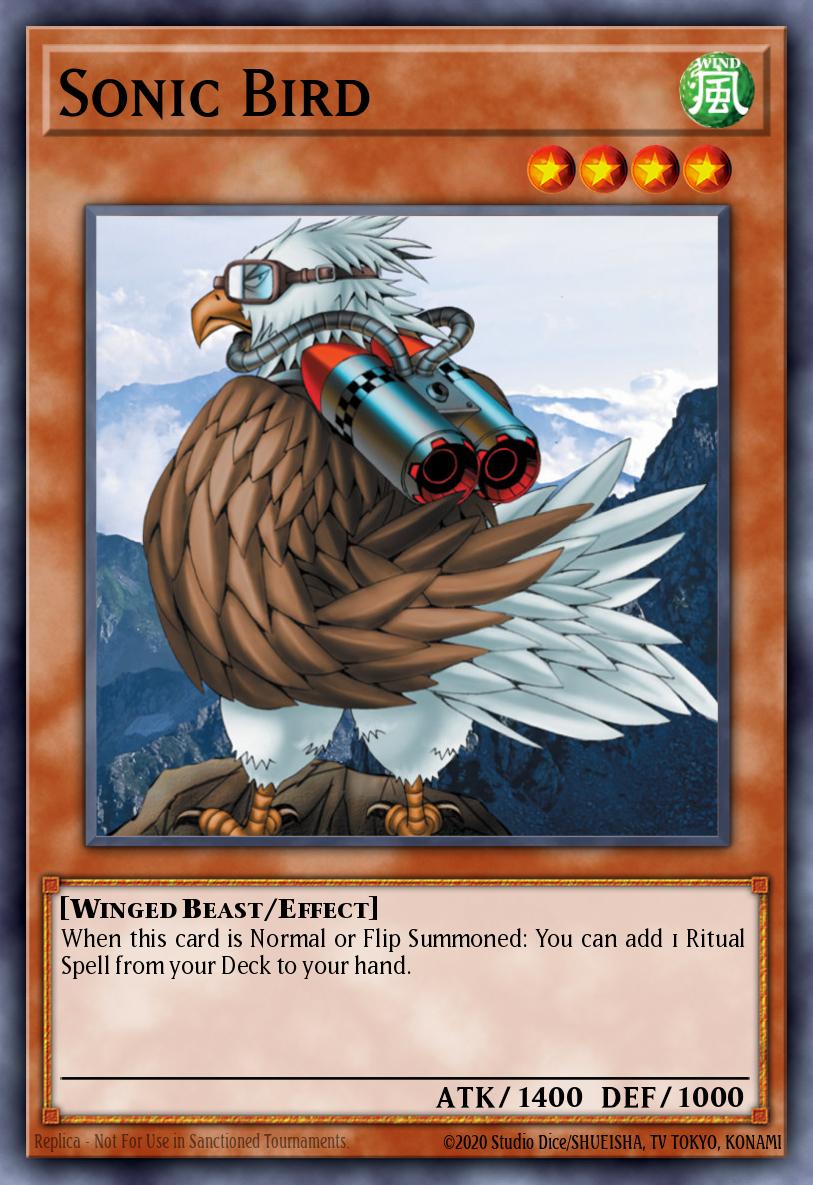
This set also featured some Common Effect Monsters, though not many are especially noteworthy. Sonic Bird first saw print here. You could use Sonic Bird to search out the Black Illusion Ritual. Then, tribute the Bird to summon Relinquished from your hand. Senju of the Thousand hands (a Rare in the same set) also let you perform a similar "combo". These cards sadly became outclassed by Manju of the Ten Thousand Hands. Despite this, Senju has still seen meta play in Nekroz and other Ritual decks. Finally, Kotodama hasn't seen any serious play in meta decks, but is in some modern plant FTK lists. The setup is quite costly: You need a bunch of plants, and Phoenixian Cluster Amaryllis, in the grave. This lets you loop the Clusters for a one-turn-kill, as Kotodama keeps destroying the 2nd Cluster.
Spells
Upstart Goblin
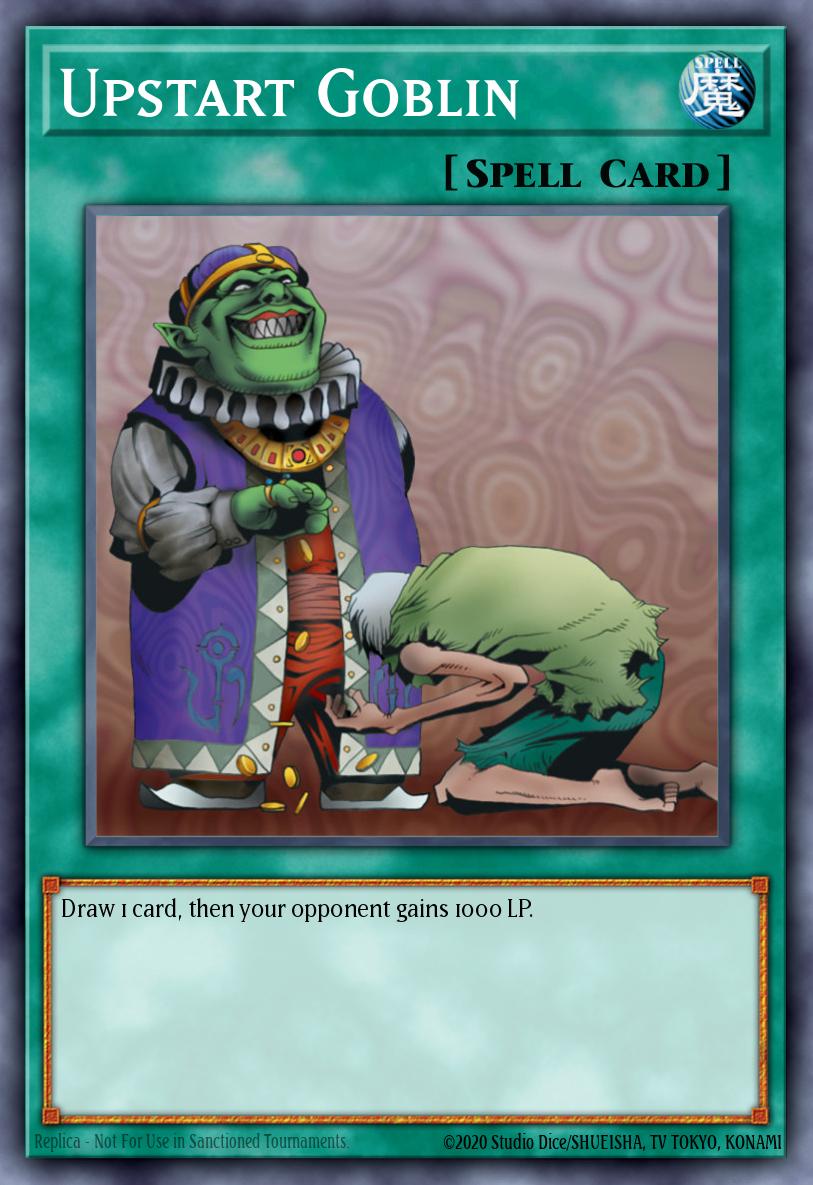
Upstart Goblin is a card which has been on and off of the Forbidden List - and rightly so, it's the #1 generic consistency card in yugioh! It was almost immediately limited, going straight to that position on the October 2002 banlist. Of all of the cards in Spell Ruler, this is the one that you should take note of the most. Upstart has seen play in practically every format. Patrick Hoban, one of the better known pro players, was a huge advocate of this card. He first included 2 copies in his YCS Miami (February 2013) build of Wind-Ups, and then found major success with Upstart Goblins and Reckless Greeds in Dragon Rulers and Mermail.
Equip Spells
Malevolent Nuzzler and Horn of Light are the common Equip Spell cards from Spell Ruler. Neither of them were especially strong back in the day, especially when compared the Ultra Rare equip spells. I'll get to those later! However, there is some cool Malevolent Nuzzler trivia out there: Malevolent Nuzzler has more errata than any other card in the TCG or OCG (9 different text changes)!
Final Destiny
The other common Spell card included here is gimmicky, but kind of cool. Final Destiny has a cool effect, but the discard cost is simply too high for it to be worthwhile. In a format with raigeki and heavy storm legal, you're better off just playing those.
Traps
There are only four Trap cards in all of Spell Ruler, and none of them have seen any real play. To start with, there's the completely useless Snake Fang. Theoretically, you could use it to attack over a high-DEF monster (such as Giant Soldier of Stone), but Reinforcements was simply better in this regard. Eatgaboon and House of Adhesive tape were worse versions of Trap Hole, and Fairy's Hand Mirror is too situational to be of much use.
Spell Ruler - Rares
Battle Recruiters
Spell Ruler introduced some of the most iconic searchers of all time: The "Battle Recruiters". These cards saw immense meta play - one much more than others - for a very long period of time. They all have the same effect: When destroyed by battle, summon a monster with the same attribute and 1500 or less ATK from your deck - you were even able to summon a copy of the recruiter itself! This created a "chain", where you could prevent a big damage swing or provide yourself with tribute fodder for the next turn. In order of total meta impact, they were;
- Mystic Tomato (DARK)
- Giant Rat (EARTH)
- Shining Angel (LIGHT)
- UFO Turtle (FIRE)
- Mother Grizzly (WATER)
- Flying Kamakiri #1 (WIND)
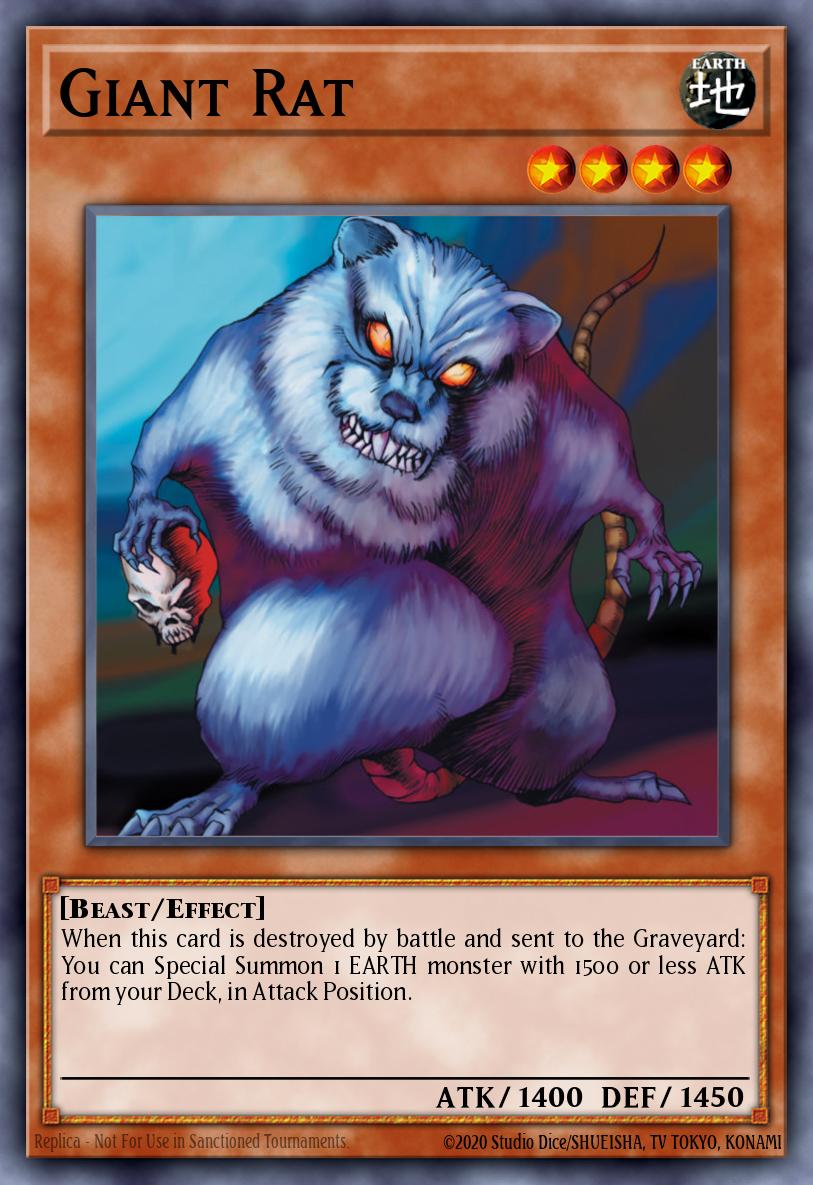
Mystic Tomato was leagues above the rest, as it could search Sangan and Witch of the Black Forest from Metal Raiders! This essentially led it to become a searcher for anything with less than 1501 ATK or DEF! The tomato was even played in Ido Marcus' build of Masked HERO for the World Championship 2015. In that deck, it was used to summon Elemental HERO Shadow Mist, to net a search.
Giant Rat would later see play in "Rat Toolbox", which was a deck in 2004 - Predating Goat Control. Here, your Giant Rat would search out the answer to a problem card at any given time. For example, D.D. Warrior could banish a monster, while Exiled Force could destroy one. Injection Fairy Lily was also used for massive damage swings. For one banlist, she was even Forbidden!
Shining Angel hasn't seen as much success of the others, mainly being featured in Angel Chaos, as a LIGHT monster for Black Luster Soldier - Envoy of the Beginning. You can read more about Angel Chaos in this article!
Cyber Jar
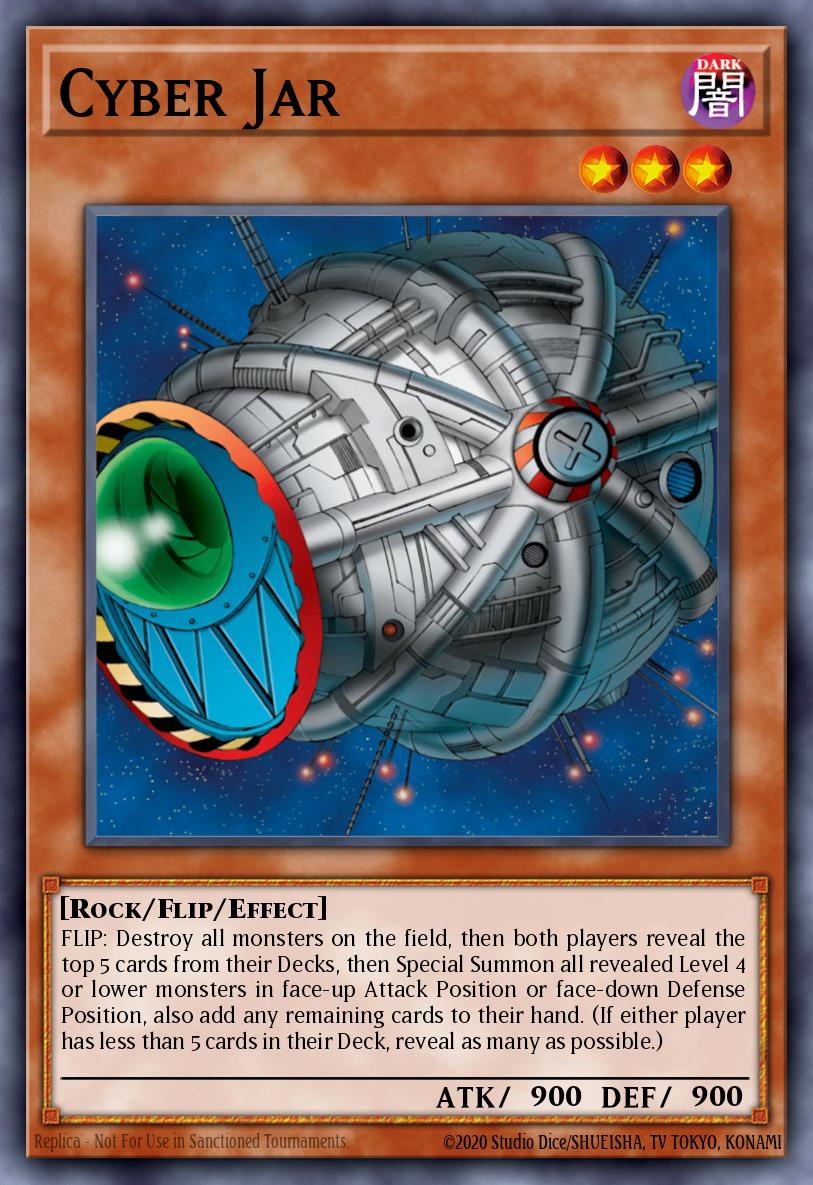
Long before the release of Morphing Jar, we had Cyber Jar. He's less well-known than his brother, mostly due to his extended period on the Forbidden List. To this day, Cyber Jar is Forbidden in both the TCG and OCG. Essentially, when flipping a Cyber Jar, you're resolving a Dark Hole, and then letting each player get 5 new cards. To me, this is a very interesting situation: Board wipes were very powerful back in the day, but Cyber Jar doesn't kill off the resources of each player. Instead, it actually replenishes their resources. This causes Cyber Jar to actually be quite skillful to play with - at least, in older formats. You might want to nuke the board, but do you really want to give the opponent 5 new cards?
The card was mostly used in "Empty Jar", which was a deck-out deck. By flipping Jars, you essentially mill the opponent for 5 cards, and draw into more mill cards, such as Book of Taiyou or Book of Moon. It also saw a lot of play in degenerate combo decks, simply as a way to find other combo pieces. Like many other Spell Ruler Cards, Jar was limited almost straight away, on the October 2002 banlist.
Swarmers
Giant Germ and Nimble Momonga were also featured as rares in this set. These cards could be annoying for the opponent, or create tribute fodder for casual decks. You have to remember that most decks from the early yugioh era were not supposed to be competitive. Although tournaments existed at this time, most players only chose to play their favorite cards from the TC show, or other less meta-breaking cards. As a result, cards like Nimble Momonga were actually somewhat popular at this point in time.
Rush Recklessly
Rush Recklessly wasn't quite as strong as other equip spells of the time, such as Stim Pack. However, the ability to play the card at Spell Speed 2 often lead to it being more versatile; It could both push for damage as well as beat over an opponent's monster on their own turn. Finally, you can even chain it to your opponent's Spell/Trap removal: The same can 't be said for Equip Spell cards.
Spell Ruler - Super Rares
This is where we move on to the disgustingly strong power cards of the set. Giant Trunade, Confiscation, and Painful Choice were all featured as Super Rares in Spell Ruler. All of these cards have been Forbidden in the TCG and OCG for a VERY long time.
Giant Trunade
Giant Trunade, oddly enough, wasn't very noteworthy at the time. It was much worse than Heavy Storm (from Metal Raiders). Storm actually nets you card advantage. Giant Trunade doesn't even destroy the opponent's cards! Because of this, Giant Trunade was seen as a "fair" card in comparison to many other backrow removal options. You couldn't use it to bounce Premature Burial yet, as Prem only came out in Pharaoh's Servant!
Painful Choice
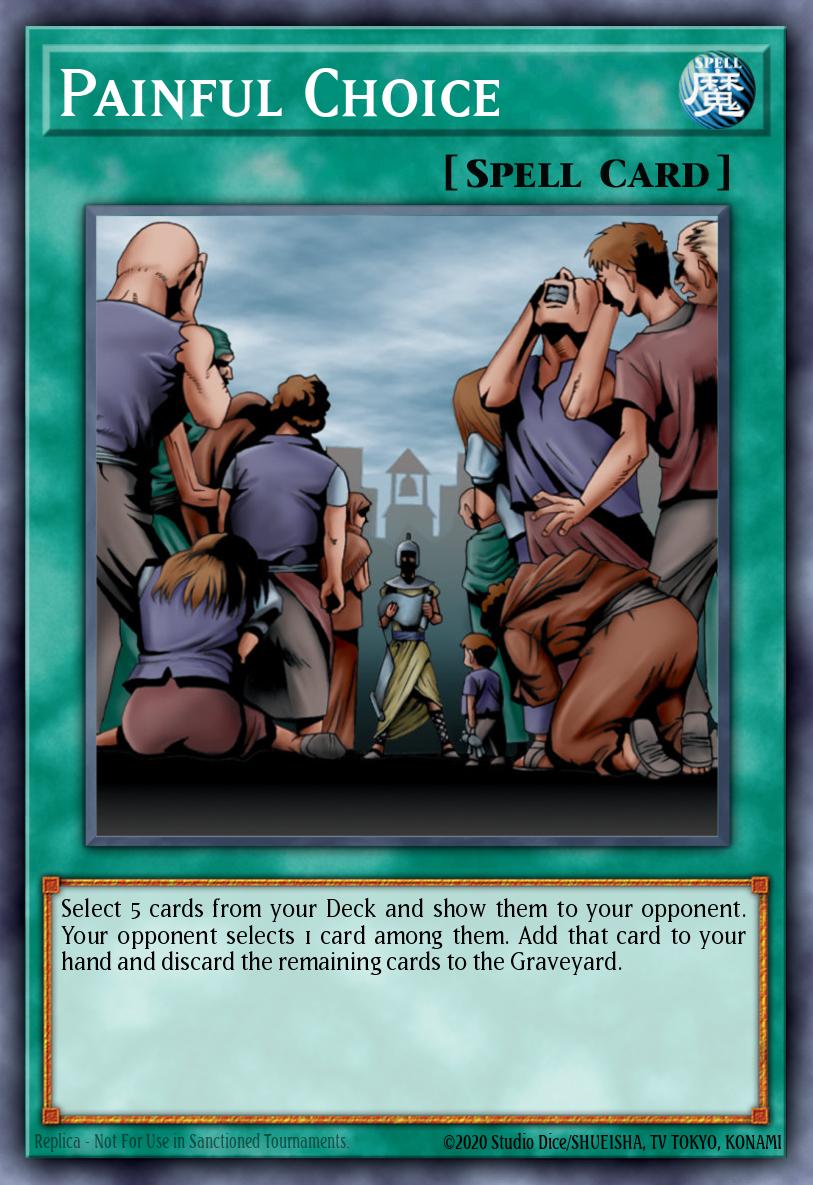
In my opinion, Painful Choice is the most powerful card in yugioh. Konami seemed to recognize this as well: Choice went straight to Limited on the October 2002 banlist. being able to thin your own deck by 5 cards, and then tutor for almost anything you need, is absurd. Being able to then utilize all 4 of the cards sent to your graveyard this way makes it beyond volatile. Perhaps a "fair" version of this card would make you reveal 5 cards with different names, and have the 4 cards go to the bottom of the deck.
At this point in time, Painful Choice was mostly only used for deck-thinning. You could also reveal 2 and 3 copies of a card you really want, giving your opponent a 50/50 choice in what you get. Although Exodia wasn't especially strong in 2002, Painful Choice was very powerful in that strategy. Thinning your deck by 5 cards, and possibly using Backup Soldier to reclaim Exodia Limbs, made it a somewhat viable deck.
Confiscation
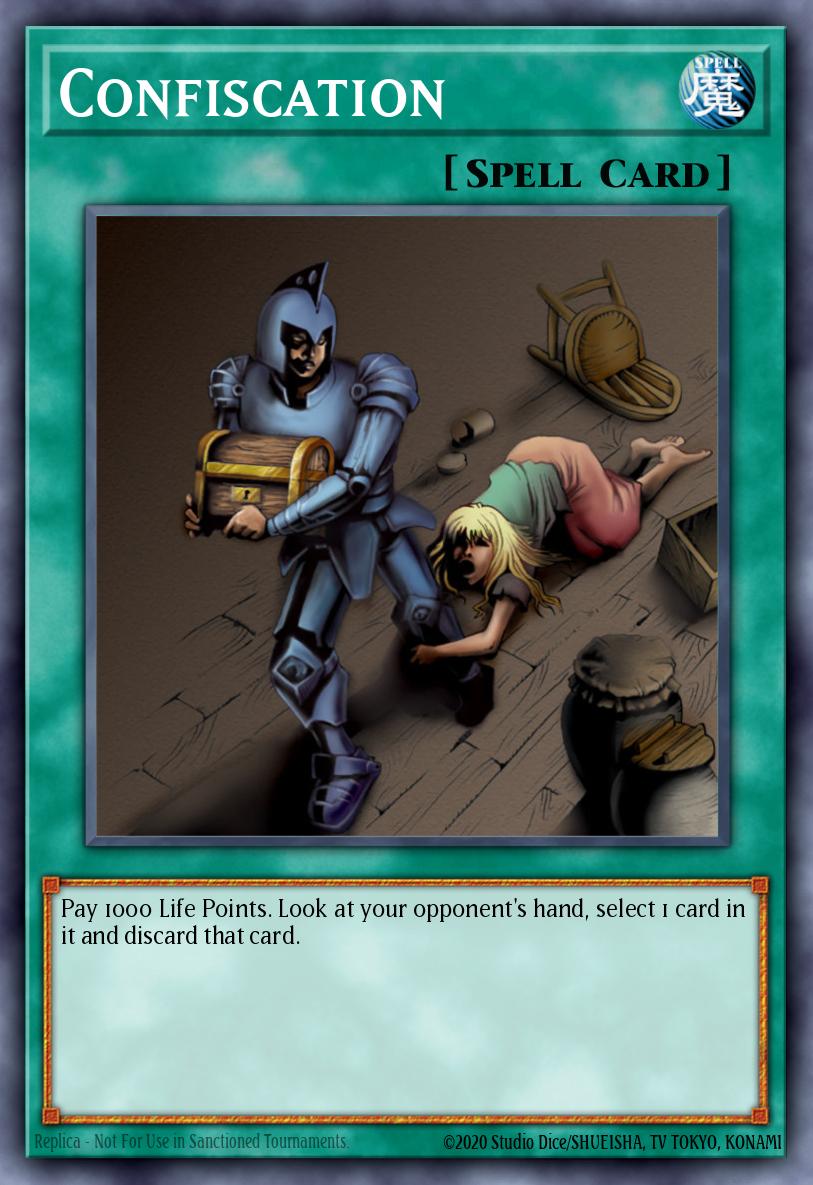 This was the first of three extremely broken hand disruption spells. Confiscation allows you to look and and discard any card from your opponent's hand, much like the Magic card, "Thoughtsieze". The other two were Ultra Rares. You probably know them already: The Forceful Sentry and Delinquent Duo. Confiscation as a Super Rare is quite interesting, as it's clearly the least powerful of the three. It never grants you real card advantage, Unlike Delinquent. It also put the card into the Graveyard (where your opponent can utilize it), unlike Sentry. Despite these weaknesses, it's still an extremely dangerous card for any format.
This was the first of three extremely broken hand disruption spells. Confiscation allows you to look and and discard any card from your opponent's hand, much like the Magic card, "Thoughtsieze". The other two were Ultra Rares. You probably know them already: The Forceful Sentry and Delinquent Duo. Confiscation as a Super Rare is quite interesting, as it's clearly the least powerful of the three. It never grants you real card advantage, Unlike Delinquent. It also put the card into the Graveyard (where your opponent can utilize it), unlike Sentry. Despite these weaknesses, it's still an extremely dangerous card for any format.Other Super Rares
Toon World was a Super Rare, and many of the Toon cards in this set were of high rarity. They were mostly unplayable until the release of Toon Kingdom, 13 years later! Maha Vailo, however, did see some play. Buffing her with Equip Spell cards could lead to some massive damage swings. It reminds me of a proto-Ben Kei OTK, which was a deck played in Goat Format. Messenger of Peace was also a Super Rare in this set, which has seen play in various formats throughout the ages. At the time, it simply added to the growing list of Stall cards in the game.
Spell Ruler - Ultra Rares
Relinquished
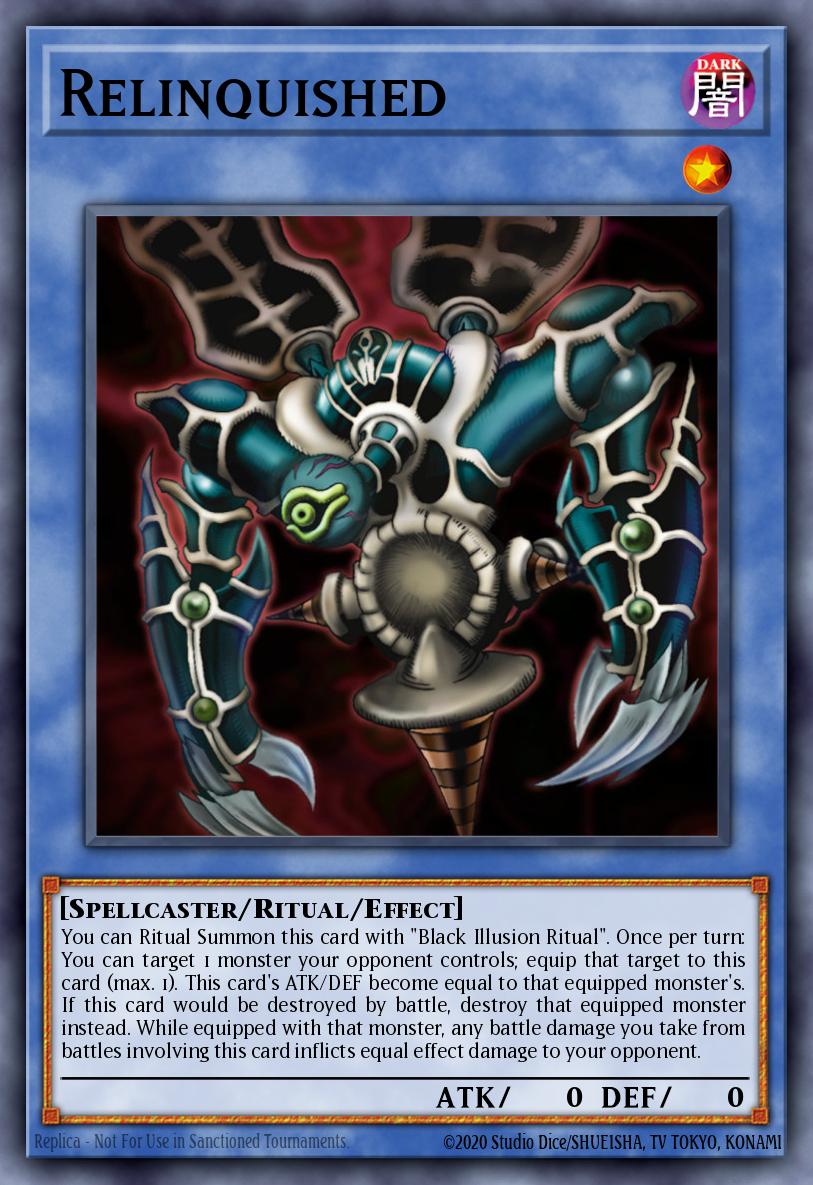
Relinquished, the cover card of the set, was a Ultra Rare! Black Illusion Ritual, its Ritual Spell card, was a Super Rare. There are lots of fun facts about Relinquished which you may not know. For example, did you know that Relinquished's text was so long, that it took Konami ten years until they could fit "You can Ritual Summon this card with "Black Illusion Ritual"." on the card? The original four versions didn't include any such text - Very confusing for one of the first ever Ritual Monsters!
The card itself wasn't especially powerful, mostly due to the Ritual Summoning Mechanic. Having to reply on Senju of the Thousand Hands and Sonic Bird to deliver what Snatch Steal could do by itself wasn't that great.
Equip Spells
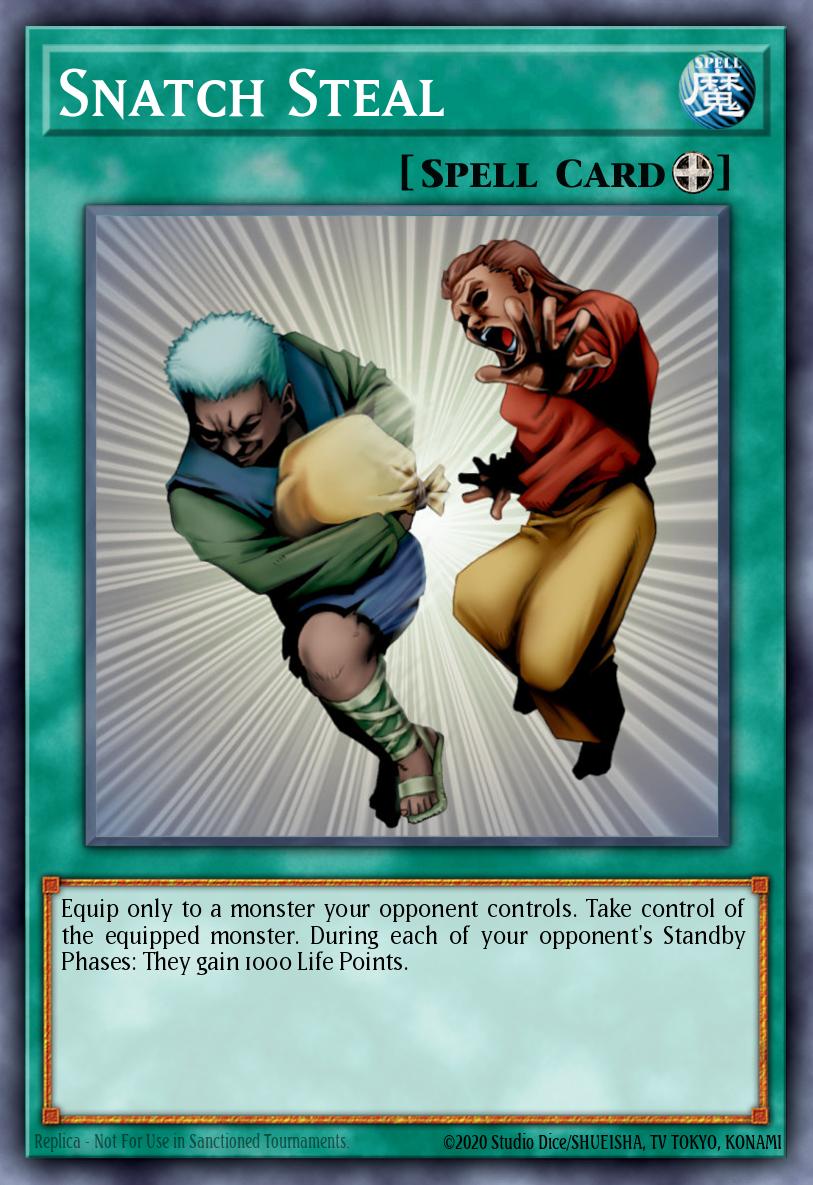
I've been alluding to Equip Spells throughout the entire article. Equip Spells were surprisingly powerful back in the day, allowing for both ATK boosts and utility. They could combo with the aforementioned Maha Vailo, though most were simply splashed into various decks.
You might remember Snatch Steal for its sudden jump from Forbidden to Limited, in January 2015! You might also remember that it went straight to Forbidden again, one list later. Snatch Steal is among the most busted of "theft" cards, being outclassed only by Change of Heart. In 2002, you'd use it mostly as a better Soul Exchange, or as a means to finish a game. Stealing monsters is a very powerful ability, as it's usually done as a +1 to card advantage. if you have a monster and I have a Snatch Steal, I end up with a monster, and you lose a monster!
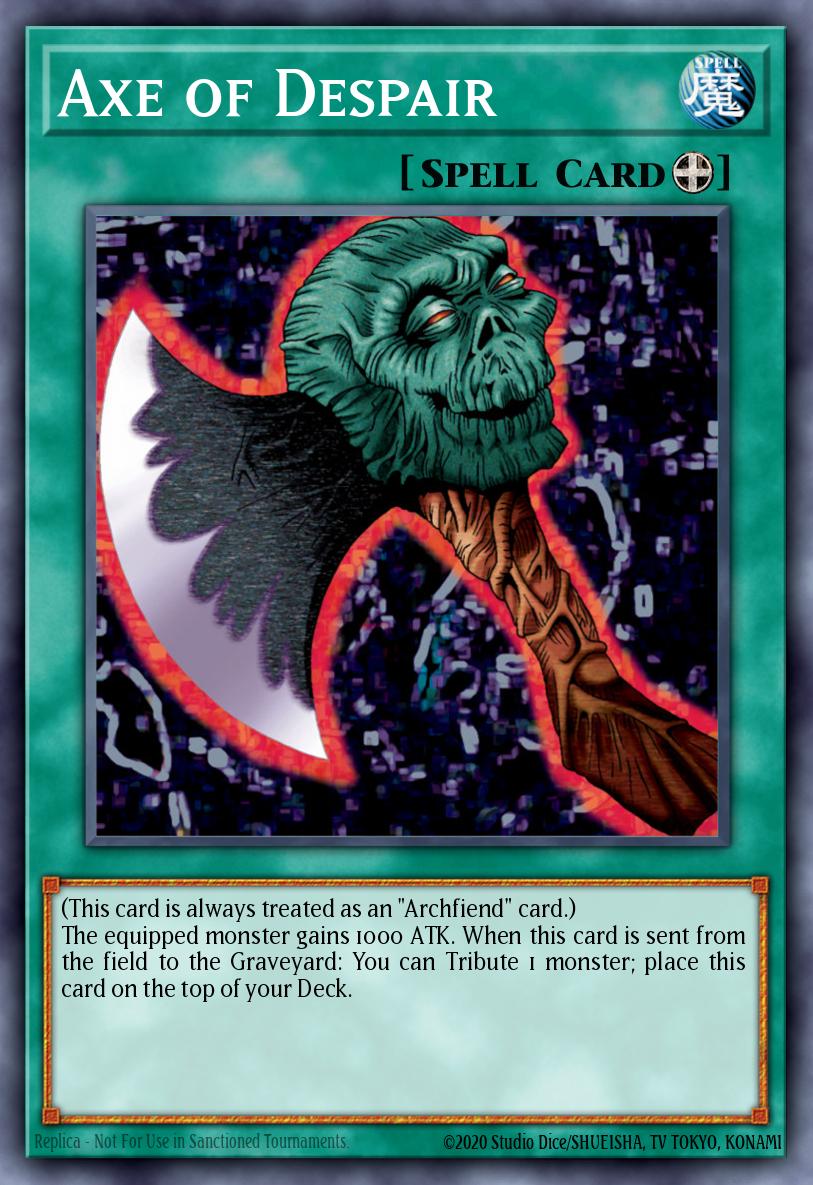 Megamorph may seem as a joke nowadays, but it was a huge threat once Cyber-Stein was released. The LP cost turns on Megamorph's boosting ability, and Stein can summon any huge monster of your choice. The go-to cards were usually Blue-Eyes Ultimate Dragon, or Cyber Twin Dragon. Outside of OTK decks, I'm not aware of any time in which this card was played.
Megamorph may seem as a joke nowadays, but it was a huge threat once Cyber-Stein was released. The LP cost turns on Megamorph's boosting ability, and Stein can summon any huge monster of your choice. The go-to cards were usually Blue-Eyes Ultimate Dragon, or Cyber Twin Dragon. Outside of OTK decks, I'm not aware of any time in which this card was played.Finally, Axe of Despair was enormous power creep of all other stat-boosting equip cards at the time. 1000 ATK was much more than Stim-Pack or Black Pendant (A super rare in this set). Axe of Despair allowed your smaller monsters to beat over the threat of a Summoned Skull, but fell out of favor quickly once better monster removal options were released.
The Forceful Sentry & Delinquent Duo
I've already mentioned these alongside Confiscation, but they're certainly powerful enough to mention again! Drawing into any of these three cards turn one can be game-over for the opponent. I think it's insane that Konami would release three different hand attack cards in the same set, but they were all limited on the next banlist. The Forceful Sentry vs Delinquent Duo is often disputed a lot; Although Duo generates card advantage, Sentry is better card selection. Personally, I think that Sentry is the more "fair" card, as it requires a skillful player to utilize, but both are absolutely absurd.
Mystical Space Typhoon
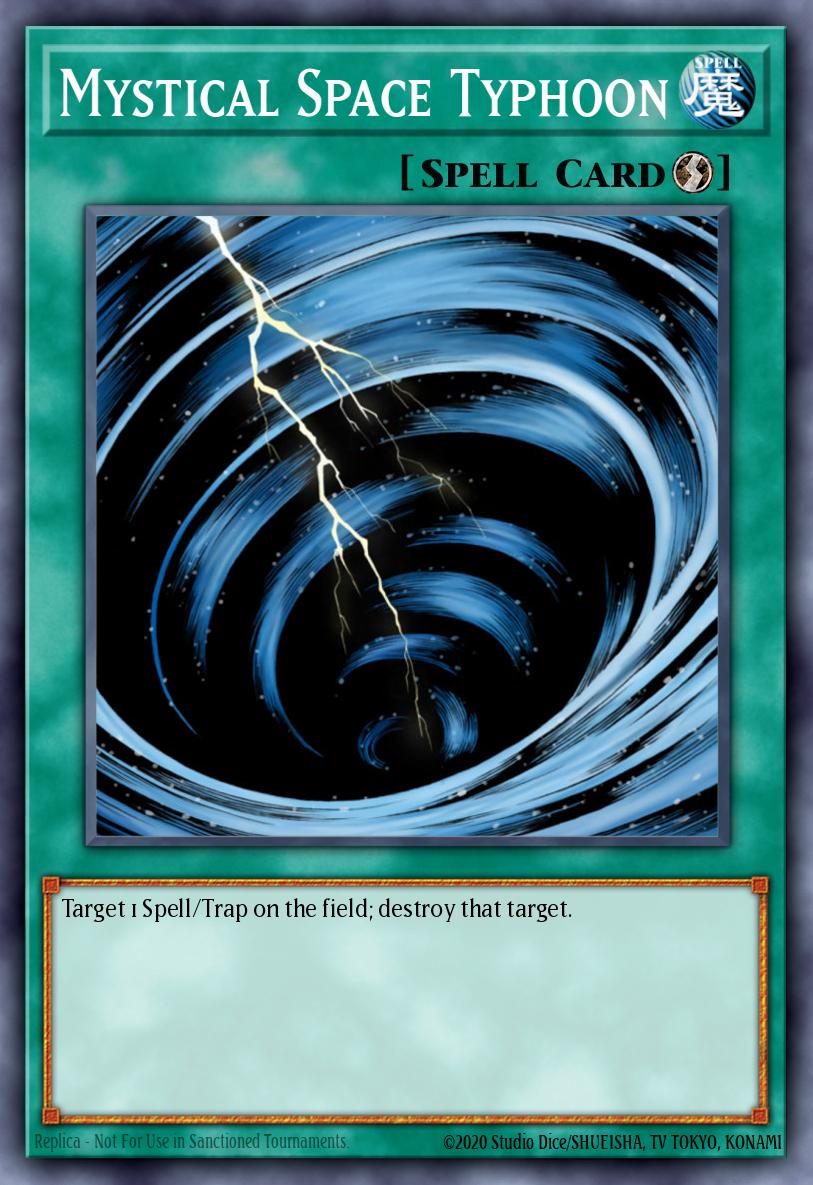
It all started here, in Spell Ruler! Mystical Space Typhoon is the threshold by which all other S/T removal options are judged. It's been reprinted twenty-eight different times (as of the writing of this article). It's also one of the few cards which you can find in every single type of Booster Pack rarity: Common, Rare, Super, Ultra, Secret, Ultimate, and Ghost! The card itself was limited for some time, having been a better version that Dust Tornado.
Throughout the years, there have been many different cards which have come close to beating MST. Twin Twisters almost did this, though the discard cost is quite heavy. Heavy Storm Duster is simply too slow, and Galaxy Cyclone only hits face-down cards. The only card which has come close is Cosmic Cyclone, which power-creeps MST if you don't care about Life Points.
Spell Ruler - Secret Rares
The Secret Rare cards in Spell Ruler were Blue-Eyes Toon Dragon, and Serpent Night Dragon. Much like previous Secret rares (Gate Guardian, Thousand Dragon, Gaia the Dragon Champion, and Blue-Eyes White Dragon), neither of these saw any use. To this day, they remain as expensive collector's items.
Serpent Night Dragon is a somewhat questionable card here; The other 5 are all relevant to the TV show in some sense, but Serpent Night Dragon is rather random. Supposedly, it makes up the DARK head of Five-Headed Dragon. It's also the evil version of Seiyaryu, as shown by their OCG names: エビルナイト・ドラゴン (Serpent Night Dragon) can be translated to "Evil Knight Dragon".ホーリー・ナイト・ドラゴン (Seiyaryu) can be translated to "Holy Night Dragon". This makes more sense when you look at the original OCG releases for these cards. Seiyaryu was released as a Promotional card for Yu-Gi-Oh! Duel Monsters II: Dark duel Stories, a Japanese Game Boy Color game in 1999. Serpent Night Dragon was released a month later, as a prize card for the First National Conference (an event relating to the video game).
